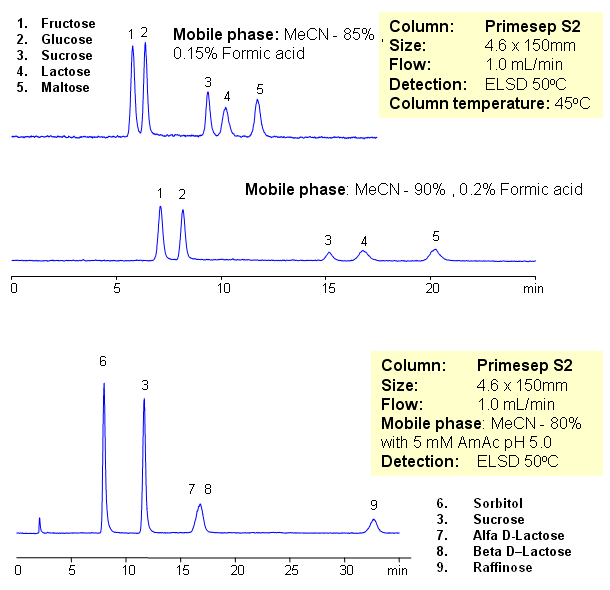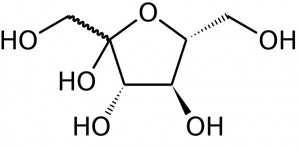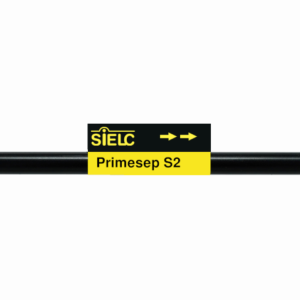| CAS Number | 57-48-7 |
|---|---|
| Molecular Formula | C6H12O6 |
| Molecular Weight | 180.156 |
| InChI Key | RFSUNEUAIZKAJO-ARQDHWQXSA-N |
| LogP | -1.96 |
| Synonyms |
|
Applications:
HPLC Separation of Sugars on Primesep S2 Column
July 14, 2011

Five sugars were separated on a Primesep S2 HILIC column with LC/MS compatible conditions. Various mobile phase produce different selectivity and separation. Method can be used as alternative to aminopropyl column. Primesep S2 column is stable and does not undergo rapid hydrolysis like aminopropyl columns.
| Column | Primesep S2, 4.6×150 mm, 5 µm, 100A |
| Mobile Phase | MeCN/H2O |
| Buffer | AmAc pH 5.0, Formic Acid |
| Flow Rate | 1.0 ml/min |
| Detection | ELSD 50C |
| Class of Compounds |
Drug, Acid, Monocarboxylic acid, Hydrophilic, Ionizable, Hormone |
| Analyzing Compounds | Fructose, Glucose, Sucrose, Lactose, Maltose, Sorbitol, Sucrose, Alfa D-Lactose, Beta D–Lactose, Raffinose |
Application Column
Primesep S2
The Primesep family of mixed-mode columns offers a wide variety of stationary phases, boasting unprecedented selectivity in the separation of a broad array of chemical compounds across multiple applications. Corresponding Primesep guard columns, available with all stationary phases, do not require holders. SIELC provides a method development service available to all customers. Inquire about our specially-tailored custom LC-phases for specific separations.
Select optionsGlucose
Lactose
Maltose
Raffinose
Sorbitol
Sucrose
alpha-D-Lactose
beta-D-Lactose



